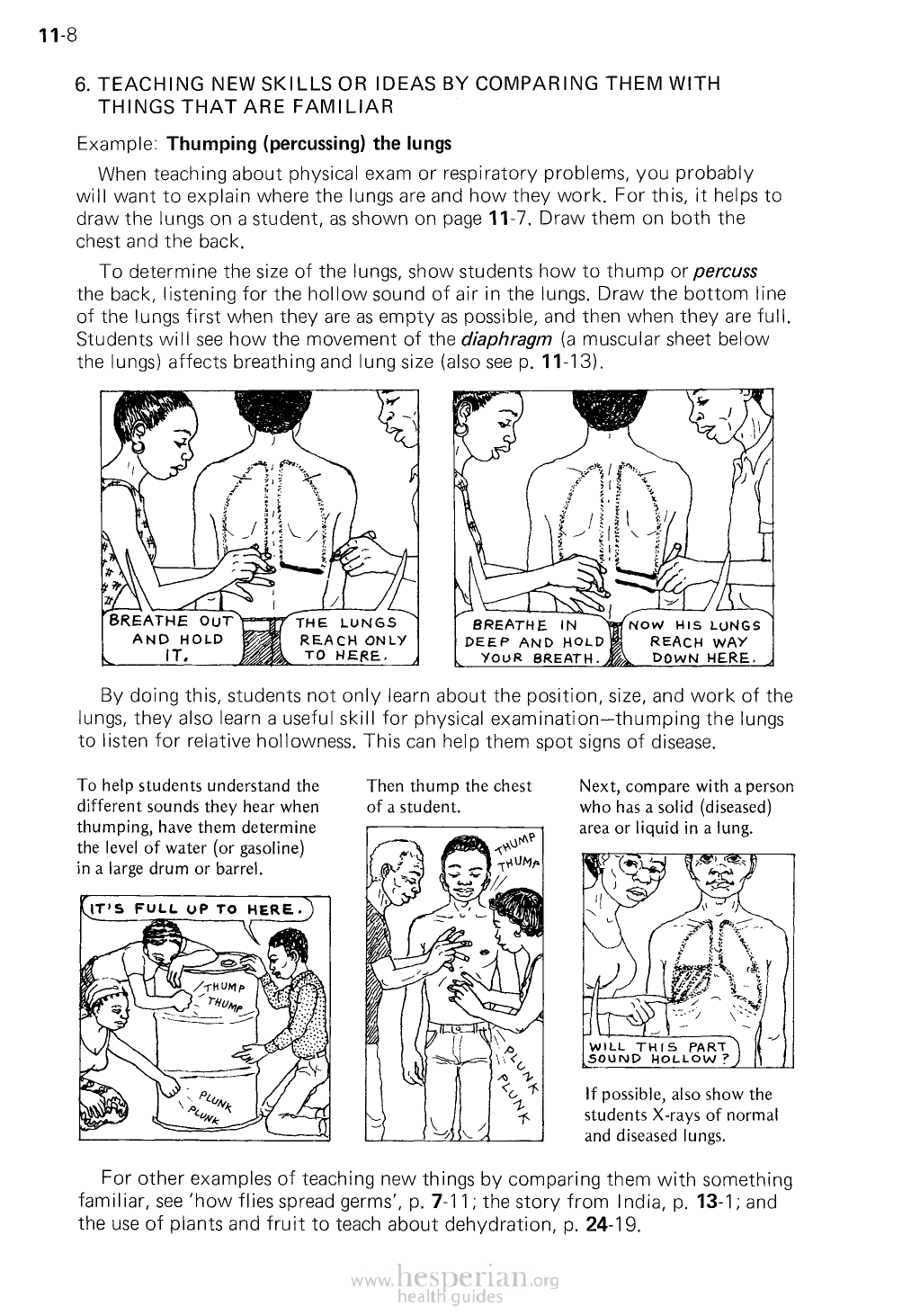
11-8
6. TEACHING NEW SKILLS OR IDEAS BY COMPARING THEM WITH
THINGS THAT ARE FAMILIAR
Example: Thumping (percussing) the lungs
When teaching about physical exam or respiratory problems, you probably will
want to explain where the lungs are and how they work. For this, it helps to draw
the lungs on a student, as shown on page 11-7. Draw them on both the chest and
the back.
To determine the size of the lungs, show students how to thump or percuss
the back, listening for the hollow sound of air in the lungs. Draw the bottom line
of the lungs first when they are as empty as possible, and then when they are full.
Students will see how the movement of the diaphragm (a muscular sheet below
the lungs) affects breathing and lung size (also see p. 11-13).
By doing this, students not only learn about the position, size, and work of the
lungs, they also learn a useful skill for physical examination-thumping the lungs to
listen for relative hollowness. This can help them spot signs of disease.
To help students understand the
different sounds they hear when
thumping, have them determine
the level of water (or gasoline)
in a large drum or barrel.
Then thump the chest
of a student.
Next, compare with a person
who has a solid (diseased)
area or liquid in a lung.
If possible, also show the
students X-rays of norma
and diseased lungs.
For other examples of teaching new things by comparing them with something
familiar, see how flies spread germs’, p. 7-11; the story from India, p. 13-1; and the
use of plants and fruit to teach about dehydration, p. 24-19.